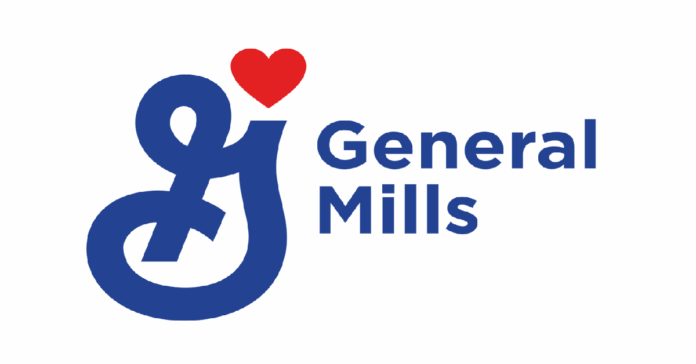General Mills (GIS) reported robust fiscal 2025 results, with a TTM ROE of 27.47% and ROTA of 25.43%, signaling strong profitability and value for investors.
General Mills, a leading global food company, has once again demonstrated its financial resilience with its fiscal 2025 fourth-quarter and full-year results, released on June 25, 2025. Despite a challenging market environment, the company delivered a trailing twelve-month (TTM) Return on Equity (ROE) of 27.47% and Return on Tangible Assets (ROTA) of 25.43%, underscoring its ability to generate substantial profits relative to its equity and tangible asset base. A detailed valuation analysis using the Buffett and McGrew Valuation Methods reveals that GIS is significantly undervalued, trading at a “Screaming Buy” status with a last closing price of $53.41 compared to an intrinsic value of $103.14 per share. This analysis, coupled with the company’s stable outlook for fiscal 2026, positions General Mills as an attractive opportunity for value investors.
Fiscal 2025 Performance Highlights
According to the latest earnings release, General Mills reported fiscal 2025 net sales of $19.6 billion, down 6% year-over-year, reflecting challenges such as volume declines and divestitures. However, the company maintained strong profitability, with an operating profit of $3.6 billion and a TTM net income of $2.56 billion. The fourth quarter alone saw net sales of $4.7 billion and a diluted EPS of $0.98, with adjusted diluted EPS at $1.01, down 9% from the prior year. These figures align with the financial data provided in the company’s quarterly reports, confirming consistency in reporting.
The TTM ROE of 27.47% was calculated using the net income of $2.56 billion divided by an average shareholders’ equity of $9.31 billion over the four quarters ending February 28, 2025. This high ROE reflects General Mills’ efficient use of equity to generate profits, a hallmark of its stable business model anchored by well-known brands like Cheerios, Betty Crocker, and Blue Buffalo. Similarly, the TTM ROTA of 25.43% was derived from the same net income divided by average tangible assets of $10.06 billion, indicating strong returns despite the company’s significant intangible assets, such as goodwill from acquisitions.
Valuation Analysis: A Compelling Opportunity
Using the Buffett and McGrew Valuation Methods, as outlined in a proprietary valuation framework, General Mills’ intrinsic value was calculated based on five years of free cash flow (FCF) data from fiscal 2021 to 2025. The company’s TTM FCF for fiscal 2025 was $2.48 billion, slightly down from $2.55 billion in fiscal 2023, reflecting a 5-year FCF CAGR of -5.7% and a 3-year CAGR of -1.4%. Due to these negative growth rates, GIS was classified as a non-growth stock, leading to the use of a conservative 5% growth rate for years 1-10, a 2.5% perpetual growth rate, and an 8% discount rate for both valuation methods.
Buffett Valuation Method
The Buffett Valuation Method projects FCF for 10 years using a constant 5% growth rate, starting from the fiscal 2025 FCF of $2.48 billion. The terminal value in year 10 was calculated as $75.18 billion, discounted to a present value of $35.15 billion. Summing the present values of the 10-year FCFs and the terminal value yielded a total intrinsic value of $56.47 billion. Dividing by the 547.51 million shares outstanding as of February 28, 2025, resulted in an intrinsic value per share of $103.14. Applying a 25% margin of safety, the target price is $77.36.
McGrew Valuation Method
For non-growth stocks like GIS, the McGrew Valuation mirrors the Buffett Valuation when the 5-year FCF CAGR is ≤10%. Thus, the calculations are identical, yielding the same intrinsic value of $103.14 per share and a margin-of-safety price of $77.36.
Valuation Status
With a last closing price of $53.41 (as of June 24, 2025), GIS trades more than 25% below its intrinsic value of $103.14, earning a “Screaming Buy” status under both methods. The valuation criteria define a Screaming Buy as a closing price at least 25% below the intrinsic value, a Buy as 7-25% below, a Hold as 6% below to 35% above, and Overvalued as more than 36% above. The significant discount suggests that the market may be undervaluing General Mills’ stable cash flows and strong brand portfolio.
| Stock Ticker | Valuation Method | Intrinsic Value per Share | Price with 25% Margin of Safety | Last Closing Price | Valuation Status |
|---|---|---|---|---|---|
| GIS | Buffett Valuation | $103.14 | $77.36 | $53.41 | Screaming Buy |
| GIS | McGrew Valuation | $103.14 | $77.36 | $53.41 | Screaming Buy |
Fiscal 2026 Outlook
General Mills provided a cautious yet stable outlook for fiscal 2026, projecting organic net sales to be flat to down 1%, adjusted operating profit to be flat to up 2%, and adjusted diluted EPS to range from $4.27 to $4.35, also flat to up 2% in constant currency. The company expects free cash flow conversion of at least 95% of adjusted after-tax earnings, with capital expenditures at approximately 4% of net sales (around $750-$800 million based on 2025 sales). This outlook reinforces the non-growth classification used in the valuation, as it indicates minimal top-line growth but sustained profitability, consistent with General Mills’ focus on efficiency and cost management.
Strategic Strengths and Market Position
General Mills’ strong ROE and ROTA reflect its robust business model, driven by a diversified portfolio of consumer staples that provide stability in volatile markets. The company’s focus on pet food (Blue Buffalo) and health-oriented brands has helped maintain profitability despite inflationary pressures and shifting consumer preferences. Its active share repurchase program, with $1.3 billion in TTM repurchases, further enhances shareholder value by reducing shares outstanding, potentially boosting future per-share metrics.
Risks and Considerations
Despite the attractive valuation, investors should consider potential risks. The negative FCF growth (-5.7% over 5 years) may reflect increased capital expenditures or working capital needs, which could persist if cost pressures continue. The conservative 5% growth assumption used in the valuations may overestimate future FCF if these trends do not reverse. Additionally, the reliance on intangible assets (e.g., goodwill) results in negative net tangible assets, which could pose risks if impairments occur. The fiscal 2026 outlook suggests limited sales growth, which may constrain FCF expansion unless offset by cost efficiencies.
Investment Implications
The “Screaming Buy” status, combined with strong ROE (27.47%) and ROTA (25.43%), makes General Mills a compelling opportunity for value investors seeking stable cash flows at a discount. The company’s consistent profitability, brand strength, and share repurchasing program enhance its appeal, particularly in a market where consumer staples offer defensive qualities. However, investors should monitor FCF trends and the impact of flat sales growth in fiscal 2026 to ensure sustained value creation.
General Mills’ fiscal 2025 performance underscores its ability to deliver strong returns, with a TTM ROE of 27.47% and ROTA of 25.43% highlighting efficient capital utilization. The valuation analysis, using both Buffett and McGrew methods, indicates that GIS is significantly undervalued at $53.41, with an intrinsic value of $103.14 per share. This discount, coupled with a stable fiscal 2026 outlook, positions General Mills as a prime candidate for value-focused portfolios. Investors should weigh the company’s strong fundamentals against potential risks from declining FCF and limited sales growth to make informed decisions.
Data Sources and Notes:
- Financial Data: Sourced from General Mills’ quarterly financial statements (cash flow, balance sheet, and financials) and the fiscal 2025 earnings release (June 25, 2025).
- Assumptions: Used 5-year FCF data (2021–2025), a 5% growth rate due to negative FCF CAGR, 8% discount rate, and 2.5% perpetual growth rate. Shares outstanding fixed at 547.51 million.
- Limitations: Negative FCF growth may overestimate intrinsic value; reliance on provided data without real-time verification; static share count ignores future repurchasing.
#GeneralMills #GIS #ValueInvesting #StockValuation #EarningsReport #ConsumerStaples #BuffettValuation #McGrewValuation #StockMarket #Investing

